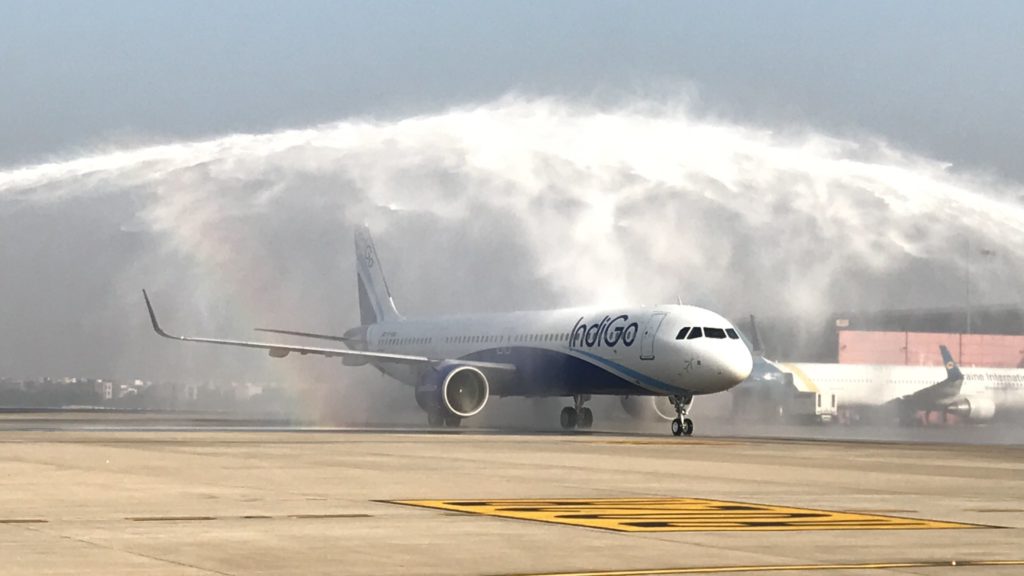Yesterday, IndiGo posted their Q3FY19 results, where they managed to eke out a small profit as compared to the massive losses in the quarter before this.
First, the good news. IndiGo made a profit of INR 191 crore for Q3FY19. The bad news, it was tiny in comparison to the profit of INR 762 crores in the same quarter last year. IndiGo fixed this drop in profits on fuel costs.
But what got IndiGo happy was that they could finally see the softening last minute ticket prices go back to firmness during November & December 2018 because of peak holiday travel. IndiGo also added 75 new flights per day during the quarter. But most of IndiGo’s profit came from other income, as is usually the case, and an INR 103.5 crores gain was made last quarter just on account of forex gains.
The CASK (Cost per Available Seat Kilometer) increased, and RASK (Revenue per Available Seat Kilometer) decreased as compared to last year. In plain talk, basically IndiGo made less money per seat, which is indicative in the low fares, but the cost of operations went up due to fuel costs, and perhaps the cost of the neos not operating to their full potential.
IndiGo’s ambition going forward is to take more money out of your pocket while keeping fares low. Which, I think, is a good ambition.
IndiGo wants to do this by improving the ancillary revenue, which consists of Buy-on-Board food, merchandise, advertising, cancellation fees, add-ons and so-on. They recognise they are still not beating the averages in this department, so more work to be done. Cargo revenues form 30% of the share whereas passenger component is 70%.
IndiGo also wants to improve its market share in cargo, which is at 27-28% at the moment. IndiGo has set itself a target of enhancing it to match its passenger market share of 42%.
What next?
In the words of Rahul Bhatia,
We are focused on building a large and profitable air transportation network in and out of India and are adding capacity in line with our long-term growth plans.
IndiGo mentioned that the incoming A321neos would form a larger share of new deliveries this year. IndiGo has 150 A321neos on order of which 1 A321neo (VT-IUA) is already delivered. Three more A321neos are currently at various stages of production/testing at Hamburg.
The A321neos will be primarily deployed on international routes. IndiGo may at a later stage also use them on domestic trunk routes.
IndiGo is aspiring to add another 34% capacity in terms of passenger seats available within this quarter but says it can ask for A320s, A321neos and so on from Airbus as long as they follow the lead time that Airbus has for them to deliver a plane.
IndiGo will continue the rampant international growth similar to the one we saw in 2018 in 2019 also. 30% of IndiGo’s growth in this quarter will be from international sectors. We already covered a lot of IndiGo’s international expansion which you can catch up on in the following posts.
The A321neos will have a flying range of six hours. So expect many new mid-haul international routes. IndiGo confirmed that flights to Istanbul will start from March 2019. IndiGo recently signed a codeshare agreement with Turkish Airline, a first for IndiGo. Apart from Istanbul, IndiGo also has plans to add flights to Moscow, Guangzhou and Vietnam to name a few.
This will be in addition to new flights to the Middle-East from Kannur. IndiGo also had plans of adding flights to Riyadh which they mentioned in Q2 FY19 earnings call.
A321neos on domestic routes
IndiGo did mention that a few A321neos will be deployed on domestic routes especially the trunk routes. The A321neos have lower unit cost and higher seating capacity. If implemented on the right flight schedules, it would do wonders for IndiGo. Imagine a few peak time frequencies on routes like Delhi-Mumbai, Delhi-Bengaluru, Delhi-Kolkata and so-on with the A321neos. Air India currently operates a lot of A321s and widebodies on metro routes.
While they mentioned that they may use the A321neos to increase capacity and reduce frequency to free up slots for new routes at slot constrained airports, there are a few in the overall route network. e.g., 6E191 and 6E129 from Delhi to Mumbai and so-on. In the end, they have to weigh the pros and cons. Whether it is better to operate 2 180/186 seat flights or a single 222 seat A321neo?
What about flights to London and other destinations in Europe?
Well, when asked about the same in the conference call, they replied that they haven’t given up on the destinations and that the answer is neither no, nor yes. A decision for the same will be soon taken. We already outlined that IndiGo is second guessing adding flights to London, and are weighing the pros and cons.
The codeshare with Turkish Airlines will cover 20 destinations in Europe. So that will give them a presence in Europe for the time being.
Bottomline
IndiGo seems to be just getting started. Over the next year, they will have tremendous growth on the international segments, and this will mean that you should see more affordable fares to newer stations in the 6-hour radius from India.
What do you think about IndiGo’s growth plans?



Leave a Reply